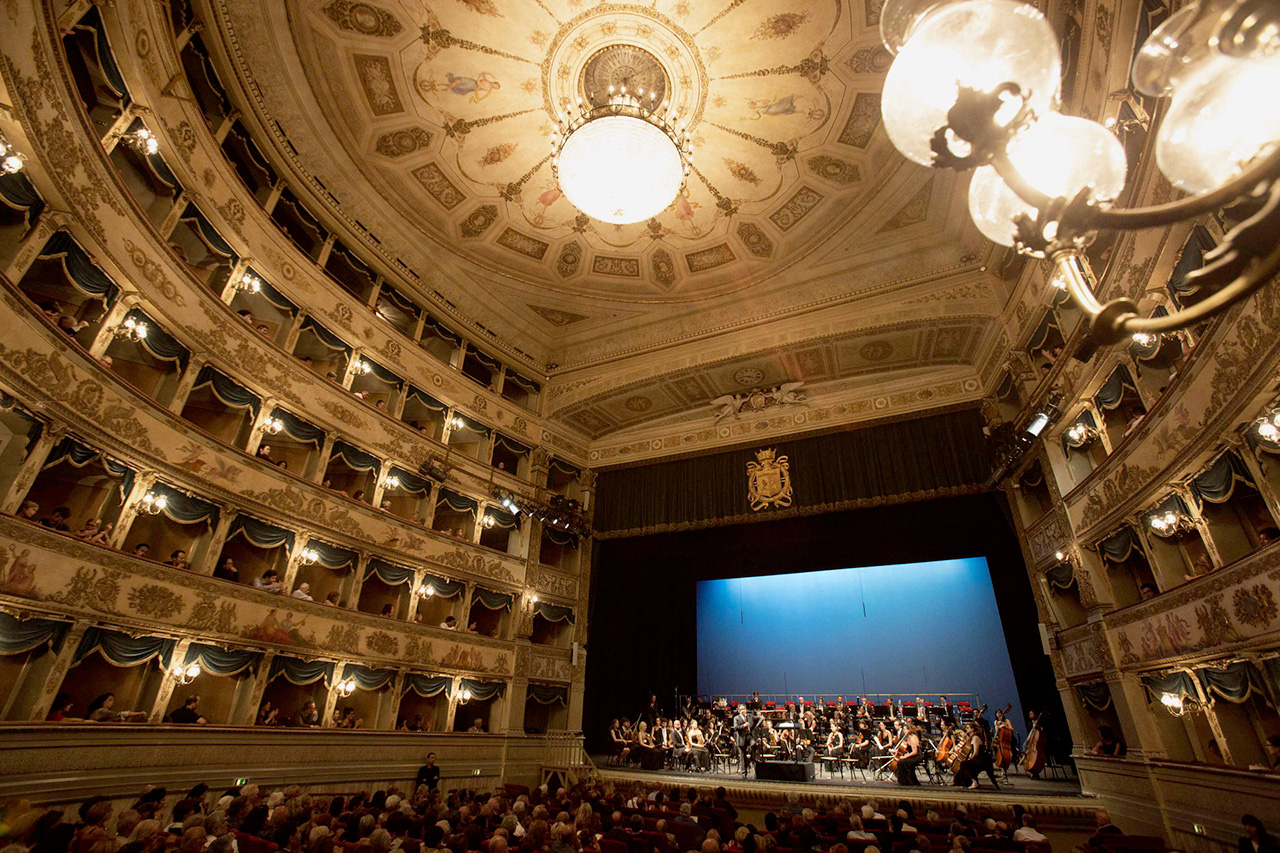Autumn Trilogy
Rigoletto
opera in three acts
libretto Francesco Maria Piave
from the play Le roi s’amuse by Victor Hugo
music Giuseppe Verdi
(Universal Music Publishing Ricordi srl, Milano)
Duke of Mantua Giordano Lucà (November 24), Giuseppe Tommaso* (November 28 and December 1)
Rigoletto, the Duke’s jester Andrea Borghini
Gilda, Rigoletto’s daughter Venera Protasova
Sparafucile, assassin Antonio Di Matteo
Maddalena, his sister Daniela Pini
Giovanna, Gilda’s nurse Cecilia Bernini
Count Monterone Giulio Boschetti
Marullo, a chevalier Paolo Gatti
Matteo Borsa, a courtier Giacomo Leone
Count Ceprano Adriano Di Bella
Countess Ceprano, his wife Giulia Mattarella
Duchess’s page Vittoria Magnarello
conductor Hossein Pishkar
direction and concept Cristina Mazzavillani Muti
light design Vincent Longuemare
visual designer Paolo Miccichè
video programmer Davide Broccoli
costume design Alessandro Lai
Orchestra Giovanile Luigi Cherubini
Coro Lirico Marchigiano “Vincenzo Bellini”
choirmaster Martino Faggiani
other choirmaster Massimo Fiocchi Malaspina
“DanzActori” Trilogia d’autunno
stage manager Luigi Barilone
répétiteurs Alessandro Benigni, Davide Cavalli
set design Laboratorio del Teatro Alighieri
costumes Tirelli Costumi Roma footwear Calzature d’Arte Pedrazzoli srl
new production
co-production Ravenna Festival, Teatro Alighieri Ravenna
* Owing to tenor Giordano Lucà’s indisposition, Giuseppe Tommaso will replace him as the Duke of Mantua in the performances on November 28 and December 1.
A new lyric marathon: three operas performed on the same stage on consecutive nights, tight rhythms and a workshop that plays on invention and creativity matching young talents and modern technologies. This is the Autumn Trilogy, which once again delves into Verdi’s world and genius, transforming the stage of the Alighieri Theatre into a true “opera factory” giving body and voice to three different steps in the composer’s artistic career. A new production alongside two creations from the “repertoire” of past Autumn Trilogies, in an ideal journey from the biblical, choral inspiration of Nabucco to the beacon of light out of darkness kindling the soul of Rigoletto, down to the dramatic colour contrast that unites/separates Otello and Desdemona.
A trilogy intended to retrace Verdi’s extraordinary creative career had to start with Nabucco (1841), the opera through which the composer managed to overcome fate’s adversity and get his life back on track as a man and a musician. An opera whose biblical and prophetic dimension culminates in a choral tapestry capable of incorporating different individualities into an ideal union of peoples and nations. This score laid the basis for Rigoletto (1851), which soon became the first part of a “popular trilogy” and the author’s own favourite work because of the vivid description of the protagonist within a perfect dramatic unity. And, after all, Nabucco also laid the foundations for the entirely renewed conception of Otello (1887), inspired by Shakespeare, the inevitable culmination of Verdi’s search for “climactic words” (parola scenica).


